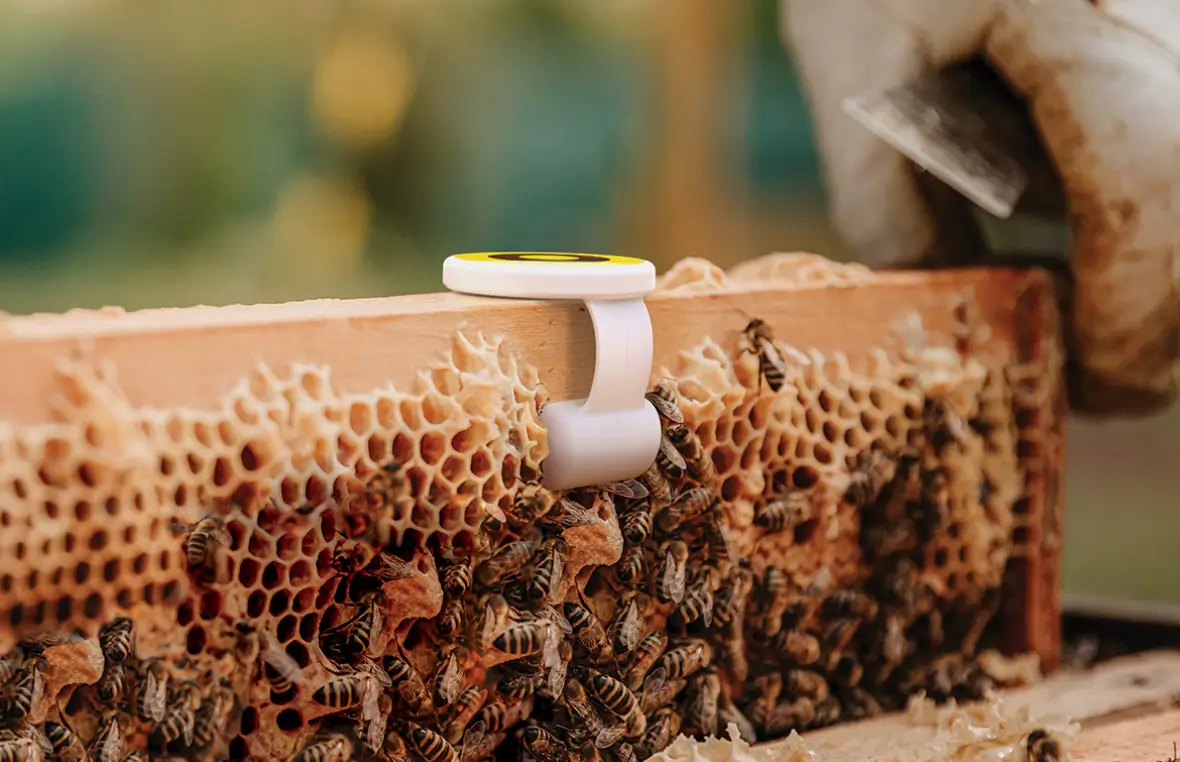Is poor nutrition partially responsible for bee decline?
Stay up to date:
Future of the Environment
Honey bees are essential for pollination of wild and cultivated plants, and honey production. As a result honeybee colonies are managed all over the world. Bees and other pollinators are in the news a lot more recently because they are declining in numbers, while the demand for crop production increases.
Pesticides and bee diseases seem to draw the most attention as the cause of declining bee numbers. But nutritional stress could be another. Habitat loss and intensified agriculture lead to diminishing food resources for bees. This additional stress lowers their resistance to pesticides and diseases.
Nutritional requirements of bees
Adult bees need mainly carbohydrates, and sugars in nectar provide energy for foraging and thermoregulation. Their larvae need protein, fats, vitamins and minerals for growth. These nutrients come from pollen. Among solitary bees, larvae are the main pollen consumers. Honey bees differ in that the main consumers are nurse bees, young workers who digest pollen and produce jelly that they feed to the larvae, also known as brood.
We need to distinguish between the quality and quantity of bee food. Mass-flowering crops such as sunflower or canola provide superabundant food. But this has disadvantages: it’s for a limited period only, it increases exposure to pesticides and it is unlikely to be nutritionally balanced. Sunflower pollen for example, contains much less protein than aloe pollen.
In addition to the total amount of protein, amino acids are important. Some pollen lacks essential amino acids, or the proportions may be wrong for developing larvae. A mixed pollen diet is much better than a single pollen source.
In a recent review of bee problems, bees feeding on monoculture crops were likened to humans eating only sardines, chocolate or parsnips for a month!
Nectar and pollen
Nectar is mainly a solution of simple sugars; sucrose, glucose and fructose in varying proportions. It also contains amino acids but in much smaller amounts. Water has to be removed from the nectar before storage as honey. This is achieved by repeated regurgitation and evaporation in the hive.
Pollen is much more complex. Much of its nutritional value is in the protein – this can be more than half the dry mass. When bees collect pollen they add nectar to stick the grains together for transport on their legs, so pollen brought into the hive contains extra sugar.
This stored pollen is known as bee bread. It’s been assumed that microbes in stored pollen improve its nutritional value through fermentation, but recent research has shown that microbes are essentially absent. In fact the added nectar has a preservative function. This confirms our analyses of sunflower and aloe pollens, which do not change in composition during storage.
Social existence makes nutrient regulation more complex. Does a bee forage for herself or the colony? Foraging bees tend to specialise in either nectar or pollen collection, but they forage for the whole colony. Its protein requirements depend on the worker/brood ratio. More brood means a greater need for pollen protein. Storage of food resources as honey or bee bread can buffer nutritional imbalances to some extent.
Interacting effects of disease, pesticides and nutrition
Honey bees are plagued by many parasites and pathogens that can affect their health. Multiple pathogen infections are common, often associated with the parasitic mite Varroa destructor. This infects most managed colonies world-wide and also transmits viral diseases.
Some pathogens have a direct influence on nutrition. The gut parasite Nosema competes with host bees for carbohydrates, placing them under energetic stress, and interferes with digestion. Poor nutrition in honey bees, as when consuming a single pollen type compared to a mixture, reduces their immunity to infection.
Malnourished honey bees may also be less efficient at detoxifying pesticides. The widely used neonicotinoids are systemic pesticides that spread throughout plant tissues and into nectar and pollen. Apart from direct toxicity, they have been shown to have subtle, sublethal effects on flight, navigation and learning in bees. This behaviour is important for food collection. A recent study showing that bees can’t taste neonicotinoid pesticides is especially worrying.
Even without going out to forage, honey bees are exposed to multiple pesticides at home. Many toxic chemicals end up in stored pollen in the hive, including the miticides that are used by beekeepers to combat Varroa.
These complex interactions between poor nutrition and other stress factors contribute to poor health of both wild and managed honey bees. But there are ways to improve bee nutrition. An obvious one is preserving semi-natural habitat in farmland, so that wild flowers sustain the bees and add variety to their diet.
This article is published in collaboration with The Conversation. Publication does not imply endorsement of views by the World Economic Forum.
To keep up with the Agenda subscribe to our weekly newsletter.
Author: Sue Nicolson is the Professor of Zoology at the University of Pretoria.
Image: Bees land on a flower. REUTERS/Jamal Saidi.
Don't miss any update on this topic
Create a free account and access your personalized content collection with our latest publications and analyses.
License and Republishing
World Economic Forum articles may be republished in accordance with the Creative Commons Attribution-NonCommercial-NoDerivatives 4.0 International Public License, and in accordance with our Terms of Use.
The views expressed in this article are those of the author alone and not the World Economic Forum.
Related topics:
Forum Stories newsletter
Bringing you weekly curated insights and analysis on the global issues that matter.
More on Food and WaterSee all
Chiara Cecchini
June 25, 2025
Zulfiqar Hamadani and Shahad Nejaim
June 25, 2025
Noopur Desai and Carrie Zhang
June 25, 2025
Valeria Kogan
June 24, 2025






